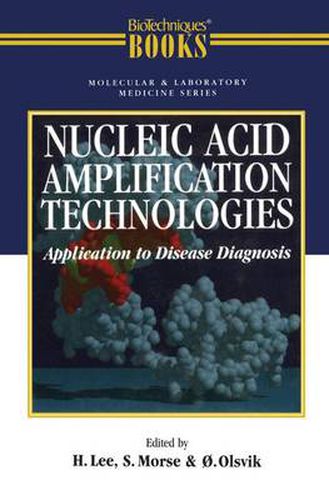Readings Newsletter
Become a Readings Member to make your shopping experience even easier.
Sign in or sign up for free!
You’re not far away from qualifying for FREE standard shipping within Australia
You’ve qualified for FREE standard shipping within Australia
The cart is loading…






This title is printed to order. This book may have been self-published. If so, we cannot guarantee the quality of the content. In the main most books will have gone through the editing process however some may not. We therefore suggest that you be aware of this before ordering this book. If in doubt check either the author or publisher’s details as we are unable to accept any returns unless they are faulty. Please contact us if you have any questions.
The polymerase chain reaction (PCR) has proved to be a powerful and versatile tool and has opened new avenues in molecular biol ogy. Alternative nucleic acid amplification techniques, such as the ligase chain reaction (LCR), nucleic acid sequence-based amplifica tion (NASBA), and transcription-mediated amplification (TMA), a variation of NASBA, are also now available. These techniques are all designed to amplify specific nucleic acid sequences in an expo nential manner, thus providing a basis for extremely sensitive diag nostic assays. However, despite the widespread and successful ap plication of genomic amplification techniques in biological research, they have not yet reached the point of routine use in clini cal laboratories. Thus, although the R&D investment in nucleic acid diagnostics is in excess of $250 million annually, clinical ap plications remain relatively modest. One of the principal reasons for this delay in clinical application has been the problem of acci dental contamination of negative clinical specimens with minute amounts of amplified products from a previous positive reaction. Carry-over contamination of amplicons can now be prevented by chemical means or the use of a closed reaction system. However, the current instrumentation is essentially modular in nature, com prising machines that perform the three essential steps of nucleic acid amplification technology: sample preparation, the amplifica tion reaction, and detection of products. Consequently, the test pro cedures are more complicated with somewhat lower sample throughput than the enzyme immunoassays currently performed in clinical laboratories.
$9.00 standard shipping within Australia
FREE standard shipping within Australia for orders over $100.00
Express & International shipping calculated at checkout
This title is printed to order. This book may have been self-published. If so, we cannot guarantee the quality of the content. In the main most books will have gone through the editing process however some may not. We therefore suggest that you be aware of this before ordering this book. If in doubt check either the author or publisher’s details as we are unable to accept any returns unless they are faulty. Please contact us if you have any questions.
The polymerase chain reaction (PCR) has proved to be a powerful and versatile tool and has opened new avenues in molecular biol ogy. Alternative nucleic acid amplification techniques, such as the ligase chain reaction (LCR), nucleic acid sequence-based amplifica tion (NASBA), and transcription-mediated amplification (TMA), a variation of NASBA, are also now available. These techniques are all designed to amplify specific nucleic acid sequences in an expo nential manner, thus providing a basis for extremely sensitive diag nostic assays. However, despite the widespread and successful ap plication of genomic amplification techniques in biological research, they have not yet reached the point of routine use in clini cal laboratories. Thus, although the R&D investment in nucleic acid diagnostics is in excess of $250 million annually, clinical ap plications remain relatively modest. One of the principal reasons for this delay in clinical application has been the problem of acci dental contamination of negative clinical specimens with minute amounts of amplified products from a previous positive reaction. Carry-over contamination of amplicons can now be prevented by chemical means or the use of a closed reaction system. However, the current instrumentation is essentially modular in nature, com prising machines that perform the three essential steps of nucleic acid amplification technology: sample preparation, the amplifica tion reaction, and detection of products. Consequently, the test pro cedures are more complicated with somewhat lower sample throughput than the enzyme immunoassays currently performed in clinical laboratories.